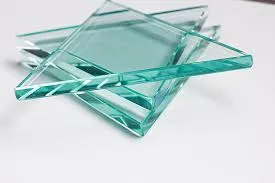Different Types of Opaque Glass An Overview
Opaque glass is a versatile material that plays a crucial role in various architectural and design applications. Unlike clear glass, opaque glass does not allow light to pass through, offering privacy, security, and aesthetic appeal. This article explores the different types of opaque glass, highlighting their unique characteristics, uses, and manufacturing processes.
1. Frosted Glass
Frosted glass is perhaps the most commonly recognized type of opaque glass. It is created by sandblasting or acid etching the surface of clear glass, resulting in a translucent finish that diffuses light while obscuring visibility. Frosted glass is frequently used in bathroom windows, office partitions, and shower doors, providing a balance of brightness and privacy. Its smooth texture also makes it easy to clean and maintain.
2. Laminated Glass
Laminated glass consists of two or more layers of glass bonded together with an interlayer, which can often be opaque. This type of glass not only enhances privacy but also offers increased safety and sound insulation. Its strength makes it ideal for use in applications where security is paramount, such as in storefronts or residential properties. Laminated opaque glass can also be customized in various colors and textures, providing design flexibility.
3. Backpainted Glass
different types of opaque glass
Backpainted glass is produced by applying a solid color paint to the backside of clear glass. This process results in a vivid, opaque surface that can be used as a decorative element in interiors. Commonly found in kitchen backsplashes, countertops, and wall panels, backpainted glass is available in a variety of colors, allowing homeowners and designers to create striking visual effects. Its glossy finish adds a modern touch to any space.
4. Opaque Vinyl-Coated Glass
Another variation is vinyl-coated opaque glass, which is achieved by applying a vinyl film to clear glass. This type of glass can be found in many commercial settings and offers both privacy and protection from UV rays. The vinyl coating can be produced in several colors and textures, allowing for innovative design solutions while providing energy efficiency and reducing glare.
5. Patterned Glass
Patterned glass features various designs embossed or pressed onto its surface, creating an opaque finish with distinct visual appeal. This type of glass can range from subtle textures to bold, geometric patterns. Patterned opaque glass is often used in interior spaces to add visual interest without sacrificing privacy. It is commonly seen in room dividers, cabinet doors, and decorative windows.
Conclusion
Opaque glass offers a broad range of styles and functionalities, making it a popular choice in both commercial and residential designs. From frosted and laminated to backpainted, vinyl-coated, and patterned options, the variety of opaque glass available allows for creativity while addressing practical needs. As trends evolve and the demand for innovative design solutions increases, opaque glass will undoubtedly continue to be a key material in the world of architecture and interior design.
 Afrikaans
Afrikaans  Albanian
Albanian  Amharic
Amharic  Arabic
Arabic  Armenian
Armenian  Azerbaijani
Azerbaijani  Basque
Basque  Belarusian
Belarusian  Bengali
Bengali  Bosnian
Bosnian  Bulgarian
Bulgarian  Catalan
Catalan  Cebuano
Cebuano  Corsican
Corsican  Croatian
Croatian  Czech
Czech  Danish
Danish  Dutch
Dutch  English
English  Esperanto
Esperanto  Estonian
Estonian  Finnish
Finnish  French
French  Frisian
Frisian  Galician
Galician  Georgian
Georgian  German
German  Greek
Greek  Gujarati
Gujarati  Haitian Creole
Haitian Creole  hausa
hausa  hawaiian
hawaiian  Hebrew
Hebrew  Hindi
Hindi  Miao
Miao  Hungarian
Hungarian  Icelandic
Icelandic  igbo
igbo  Indonesian
Indonesian  irish
irish  Italian
Italian  Japanese
Japanese  Javanese
Javanese  Kannada
Kannada  kazakh
kazakh  Khmer
Khmer  Rwandese
Rwandese  Korean
Korean  Kurdish
Kurdish  Kyrgyz
Kyrgyz  Lao
Lao  Latin
Latin  Latvian
Latvian  Lithuanian
Lithuanian  Luxembourgish
Luxembourgish  Macedonian
Macedonian  Malgashi
Malgashi  Malay
Malay  Malayalam
Malayalam  Maltese
Maltese  Maori
Maori  Marathi
Marathi  Mongolian
Mongolian  Myanmar
Myanmar  Nepali
Nepali  Norwegian
Norwegian  Norwegian
Norwegian  Occitan
Occitan  Pashto
Pashto  Persian
Persian  Polish
Polish  Portuguese
Portuguese  Punjabi
Punjabi  Romanian
Romanian  Russian
Russian  Samoan
Samoan  Scottish Gaelic
Scottish Gaelic  Serbian
Serbian  Sesotho
Sesotho  Shona
Shona  Sindhi
Sindhi  Sinhala
Sinhala  Slovak
Slovak  Slovenian
Slovenian  Somali
Somali  Spanish
Spanish  Sundanese
Sundanese  Swahili
Swahili  Swedish
Swedish  Tagalog
Tagalog  Tajik
Tajik  Tamil
Tamil  Tatar
Tatar  Telugu
Telugu  Thai
Thai  Turkish
Turkish  Turkmen
Turkmen  Ukrainian
Ukrainian  Urdu
Urdu  Uighur
Uighur  Uzbek
Uzbek  Vietnamese
Vietnamese  Welsh
Welsh  Bantu
Bantu  Yiddish
Yiddish  Yoruba
Yoruba  Zulu
Zulu 

